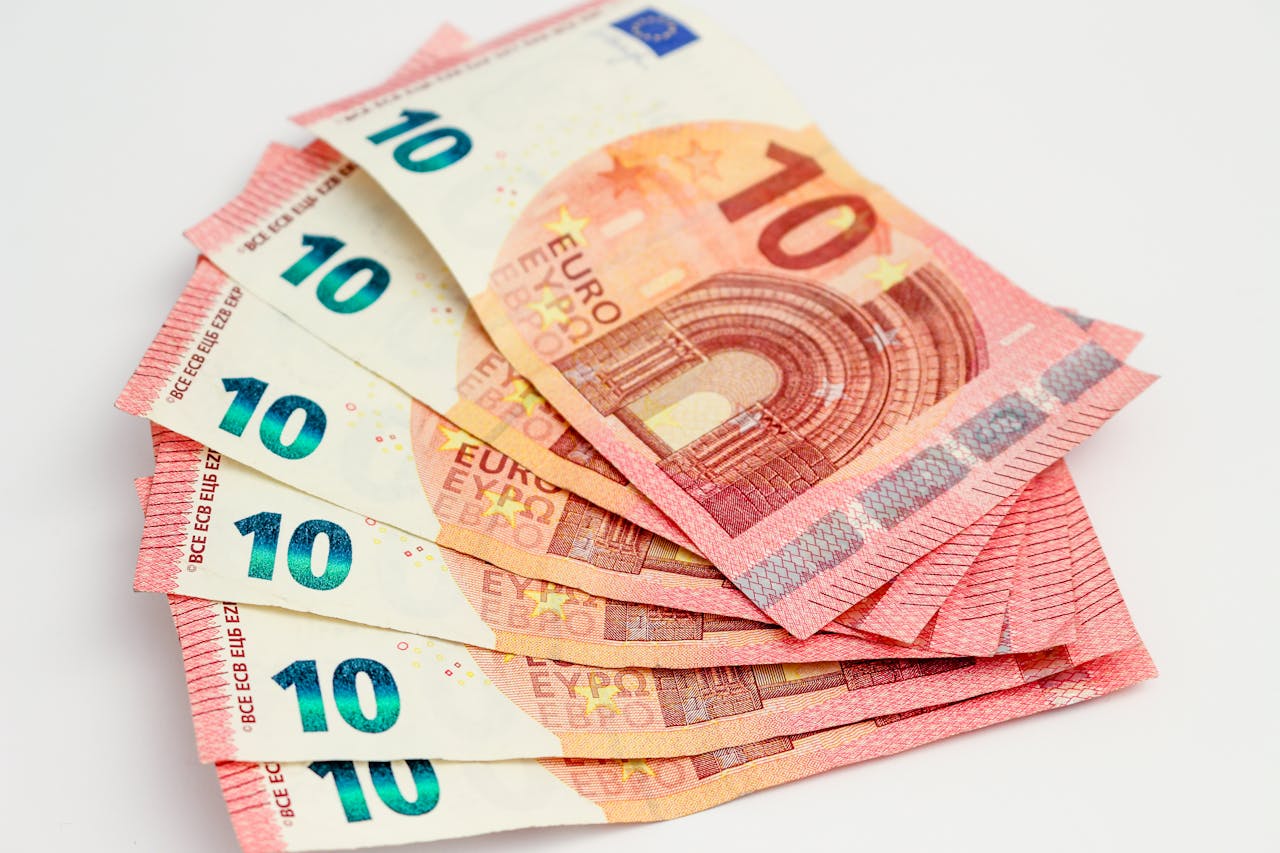1. Why Do We Feel Like “Money Keeps Losing Value”?
Let’s start with a real example: In early 2020, you could buy a whole bag of fresh vegetables at Walmart in the U.S. for $5. By 2022, that same $5 might only get you two carrots and a box of salad. The goods didn’t change—but the money feels weaker. What’s going on?
Many people simply blame “rising prices,” but the real cause is closely tied to governments printing more money.
2. Behind Money Printing: More Dollars, Same Number of Goods
Let’s begin with a basic logic: If there are 100 apples in the market and people collectively have $100, then each apple costs $1. But if the government suddenly prints another $100 and distributes it, while the number of apples stays the same, what happens?
People are willing to pay more → apple price rises to $2 → this is the start of inflation: more money, same goods.
Economists use the formula MV = PQ:
- M is money supply,
- V is money velocity,
- P is price level,
- Q is real output.
If M increases and Q doesn’t, then P (price level) must rise.
3. Money Printing Amplifies Consumer Demand
Printing money doesn’t just change the numbers—it changes behavior.
For example, in 2020–2021, the U.S. issued three rounds of stimulus checks, injecting a total of $5 trillion. Household incomes rose sharply. Suddenly, people had more cash and started hoarding goods, buying electronics, upgrading cars…
But the problem? Global supply chains hadn’t recovered. Many factories were shut down, logistics stuck.
So demand skyrocketed, supply didn’t—prices exploded.
In 2021, prices for household electronics, furniture, and used cars in the U.S. rose more than 20% year-over-year, and hit all-time highs for 12 months straight. That’s classic demand-pull inflation.
4. When Price Hikes Become “Expected,” It Triggers a Feedback Loop
Inflation isn’t just “stuff getting more expensive.” What’s worse is when people start to expect that “everything will be even more expensive soon.”
That mindset creates a chain reaction:
- Consumers rush to stock up, fearing shortages
- Businesses raise prices early, expecting higher costs
- Workers demand raises to keep up with living expenses
Result: price hike → expectation → more price hikes.
This self-reinforcing loop may drive inflation more than money printing itself.
In 2022, a key U.S. inflation indicator—Owner Equivalent Rent (OER)—surged even though actual vacancy rates hadn’t dropped. Rents kept climbing. Why? Market expectations, not real shortages.
5. Cheap Credit Fuels Asset Bubbles: Housing, Stocks, and More
When governments print money, they usually inject it into commercial banks by buying bonds. Suddenly, banks have extra liquidity—and they lend more.
This creates a domino effect:
- More loans → home prices surge
- Home value rises → households feel wealthier
- Feeling richer → people spend more
- More spending → more inflation
This is the pattern of asset-driven inflation. In 2021, U.S. home prices rose 19% year-over-year. Nasdaq doubled in a year. These aren’t random—they’re tied to excess credit in the system.
6. Fiscal Deficits + Money Printing = Eroding Trust in Currency
Sometimes governments use money printing to cover deficits. For example, central banks buy government bonds, funding more public spending.
It works short-term. But over time, if deficits keep growing, markets begin to lose trust in the currency.
Once investors panic about a devalued dollar, they flee to gold, crypto, or foreign assets. This weakens the dollar, raises import prices, and adds a new wave of inflation.
This is fiscal-driven inflation—it doesn’t hit right away, but gradually erodes confidence in money itself
7. Case Study: The U.S. from 2020–2024 Is a Textbook Example
Let’s look at some hard numbers:
- From 2020–2022, the U.S. rolled out $5 trillion in stimulus
- Fed balance sheet ballooned from $4.2T to $9T
- CPI rose from 1.4% to 9.1% by June 2022—highest in 40 years
- Used car prices jumped 40%, grocery prices by 35%
- Meanwhile, wages only rose ~11%—real purchasing power dropped
This is a classic chain reaction: printing money → spending surge → inflation spiral.
8. Frequently Asked Questions About Printing Money and Inflation
Does printing money always cause inflation?
Not always—but it depends on the context. If an economy has unused capacity, printing money might boost productivity without raising prices. However, when supply can’t keep up with demand—as seen in the U.S. during 2020–2022—inflation becomes almost inevitable.
Why did inflation spike after COVID-19 stimulus checks?
Because demand surged while supply chains were broken. In the U.S., trillions in stimulus gave people extra cash to spend, but factories and shipping lanes hadn’t fully reopened. The result? Too many dollars chasing too few goods—classic inflation.
Is printing money the same as quantitative easing (QE)?
Not exactly. QE is when central banks buy financial assets (usually government bonds) to inject liquidity into the banking system. It’s a form of controlled money expansion. But if overused, QE can lead to the same inflationary outcomes as direct printing.
How does printing money affect the average person?
In everyday life, you’ll notice:
- Grocery and rent prices climbing
- Paychecks buying less each month
- Savings losing purchasing power
- Assets like homes or stocks getting out of reach
This erodes the middle class’s financial security, especially if wages don’t rise with inflation.
Can inflation be reversed after printing money?
Yes, but it’s difficult. Central banks may raise interest rates to “cool down” the economy—like the Fed did in 2022–2023. But this also slows down growth, raises mortgage costs, and can even trigger a recession. Undoing inflation often comes with trade-offs.
What’s the difference between demand-pull and cost-push inflation?
- Demand-pull inflation happens when consumers spend more than the economy can produce—often fueled by printed money.
- Cost-push inflation occurs when production costs (like oil or labor) rise, and businesses pass that on to consumers.
In reality, both often happen at the same time.
Could printing money ever be a good idea?
In emergencies—yes. During wars or pandemics, temporary money expansion can save lives and prevent collapse. But without a clear exit strategy, it risks long-term inflation and currency devaluation.
What countries have suffered the worst from money printing?
History offers painful lessons:
- Zimbabwe (2008) saw 79.6 billion% inflation after hyper-printing
- Venezuela (2016–2020) experienced total economic collapse
- Even developed nations like Germany (1920s) went through hyperinflation when printing spiraled out of control
These examples show what happens when trust in money evaporates.
9. Printing Money Isn’t Evil—But Abusing It Makes Everyone Poorer
Printing money during crises isn’t wrong—it’s sometimes necessary. But when governments routinely print to cover spending, the consequences hit hard:
- Salaries don’t keep up
- Savings lose value
- Middle-class assets shrink
- Businesses face rising costs and pull back
Inflation isn’t some abstract macroeconomic term—it’s the look on your face when the grocery bill suddenly doubles.



